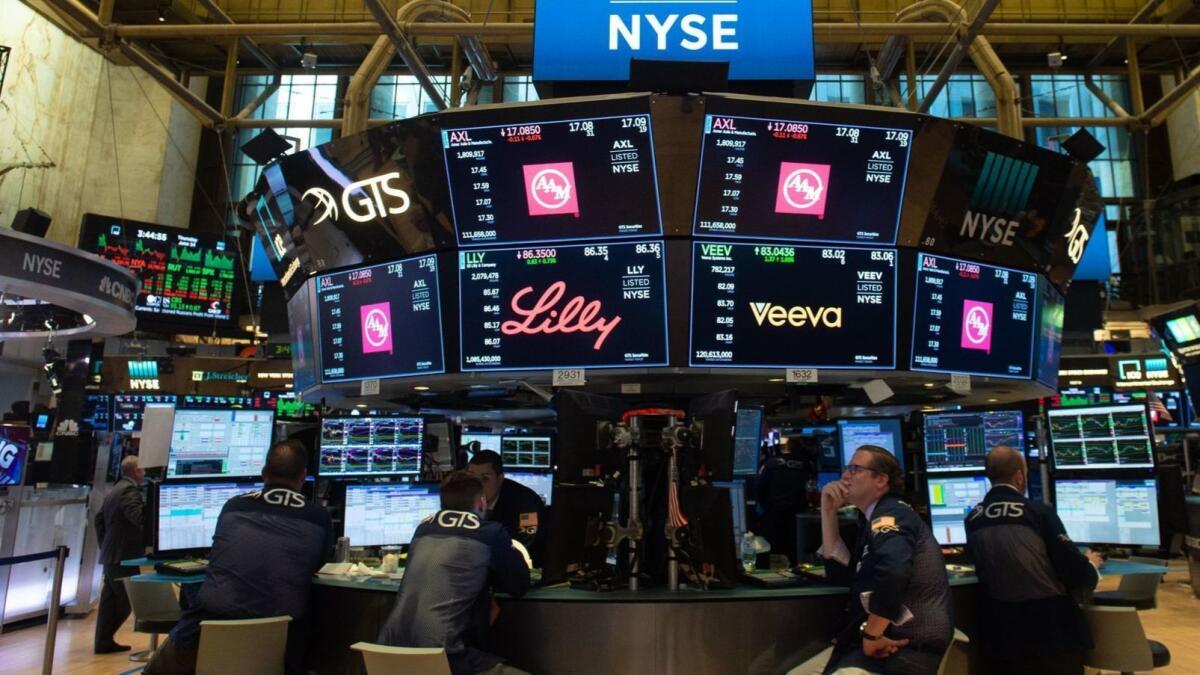Stocks and bond yields dip amid trade worries

U.S. stocks closed out a whirlwind week with a modest loss Friday as markets gauged how much to fret about the Trump administration’s decision to step up its trade dispute with China.
The White House announced tariffs on $50 billion of imports from China, and China’s almost immediate response was a promise to retaliate with its own tariffs on the same scale. Stocks sank from the start of trading. At the close, the S&P 500 was down 3.07 points, or 0.1%, at 2,779.42. The Dow Jones industrial average fell 84.83, or 0.3%, to 25,090.48, and the Nasdaq composite dropped 14.66, or 0.2%, to 7,746.38.
The worst-case scenario for investors is that an escalating trade war between the United State and China will leave the global economy as collateral damage. Barriers to trade could result in higher retail prices for all kinds of products, weaker profits for companies and slower growth around the world. President Trump has railed against the United States’ trade deficits with other countries as unfair.
Investors generally don’t expect the worst-case scenario to occur. The expectation for many is that the tariffs are merely a tool to spur the creation of new trade deals rather than as an end in itself.
“It’s something that could hurt the economy if followed through on, but for now, markets seem to be assessing this as just a negotiation that is out there for everyone to see,” said Matthew Miskin, market strategist with John Hancock Investments.
That belief helped to temper Friday’s losses, and the day’s trading was reminiscent of April 4, when stocks plunged at the opening bell on concerns about a U.S.-China tariff tiff only to end the day higher.
Tariffs weren’t the only thing moving markets following a busy week full of encouraging reports on the U.S. economy and policy announcements from the world’s biggest central banks.
Attention is focused on central banks because they’re in various stages of pulling away from the emergency stimulus put in place following the Great Recession. The Bank of Japan decided on Friday to keep its stimulus program on track, for example. A day earlier, the European Central Bank said it would halt its bond-buying program after the end of the year.
The U.S. Federal Reserve is further along this path. On Wednesday, it raised its benchmark rate for the fourth time in the last year and indicated two more increases may be on the way in 2018, which was more aggressive than some investors expected.
The biggest losses Friday came from the energy sector, where stocks fell with a sharp drop in the price of oil. Crude sank amid speculation that oil-producing countries could push to increase production at next week’s OPEC meeting. Benchmark U.S. crude fell $1.83 to $65.06 per barrel. Brent crude, the international standard, lost $2.50 to $73.44 per barrel.
Treasury yields fell for a second straight day, and the yield on the 10-year Treasury note sank to 2.91% from 2.94% late Thursday.
Gold dropped $29.80 to settle at $1,278.50 per ounce, silver fell 78 cents to $16.48 per ounce and copper lost 8 cents to $3.14 per pound.
The dollar rose to 110.62 Japanese yen from 110.57 yen late Thursday. The euro rose to $1.1607 from $1.1591, and the British pound inched up to $1.3282 from $1.3281.
UPDATES:
2:55 p.m.: This article was updated with the market’s close.
This article was originally published at 7:35 a.m.
More to Read
Inside the business of entertainment
The Wide Shot brings you news, analysis and insights on everything from streaming wars to production — and what it all means for the future.
You may occasionally receive promotional content from the Los Angeles Times.










